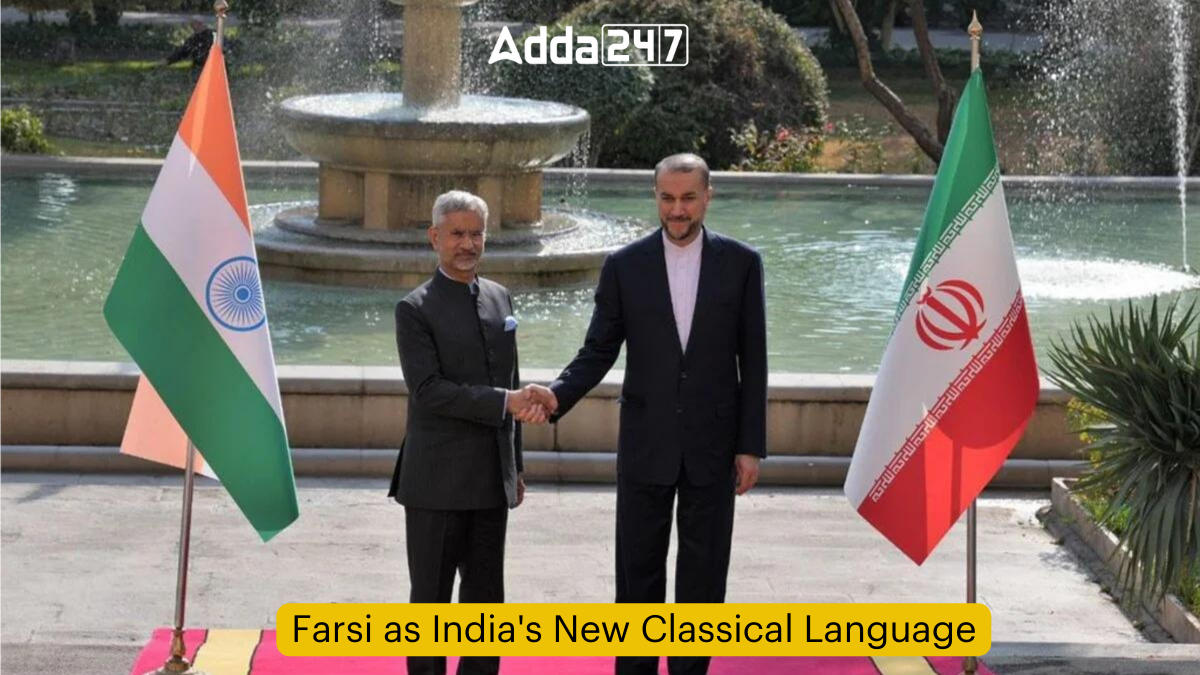In a noteworthy development aimed at strengthening cultural ties, the Government of India, under the New Education Policy, has decided to include Farsi (Persian) as one of the nine classical languages of India. This announcement was made by External Affairs Minister S Jaishankar during a two-day visit to Iran, highlighting the cultural, literary, and linguistic connections between Iran and India.
Historical and Cultural Significance of Farsi
Farsi, also known as Persian, is an Indo-Iranian language belonging to the Iranian branch of the Indo-Iranian languages. It has a rich historical and cultural significance, not only in Iran but also in the broader Persian-speaking world. The language is known for its extensive literary heritage, with poets like Rumi and Hafez making significant contributions to Persian literature.
Classical Languages in India: An Overview
Before Farsi’s inclusion, India recognized six languages as classical: Tamil (2004), Sanskrit (2005), Kannada (2008), Telugu (2008), Malayalam (2013), and Odia (2014). The criteria for declaring a language as ‘Classical’ include a recorded history of 1500-2000 years, a valuable heritage of ancient literature, an original literary tradition, and distinctness from modern forms or offshoots.
Benefits of Classical Language Status
The recognition as a classical language brings several benefits, such as international awards for scholars, the establishment of a Centre of Excellence for Studies in Classical Languages, and the creation of Professional Chairs for Classical Languages in Central Universities.
The Eighth Schedule of the Indian Constitution
The Eighth Schedule of the Indian Constitution lists the official languages of the Republic of India, including 22 languages. This schedule is pivotal for representation on the Official Languages Commission and enriches Hindi and English, the official languages of the Union. The Eighth Schedule of the Indian Constitution, governed by Articles 344(1) and 351, lists the official languages of India, currently numbering 22. This schedule initially included 14 languages in 1950, with gradual additions over the years, reflecting India’s linguistic diversity and cultural richness.
Important Questions Related to Exams
Q1. Which of the following languages has been recently included as one of the nine classical languages of India under the New Education Policy?
Q2. Who announced the inclusion of Farsi (Persian) as a classical language during a two-day visit to Iran?
Q3. Which poets are mentioned for their significant contributions to Persian literature, emphasizing the rich historical and cultural significance of Farsi?
Q4. What criteria are considered for declaring a language as ‘Classical’ in India?
Q5. What benefits does the recognition as a classical language bring to a language in India?
Kindly share your responses in the comment section.



 ₹200 Crore Census Aims to Boost Livest...
₹200 Crore Census Aims to Boost Livest...
 EIB Funds ₹2,800 Cr for Bengaluru Subu...
EIB Funds ₹2,800 Cr for Bengaluru Subu...
 Govt Announces Extra Pension for Seniors...
Govt Announces Extra Pension for Seniors...

